Sat Mag
Is there a need for another ‘Life of the Buddha’?
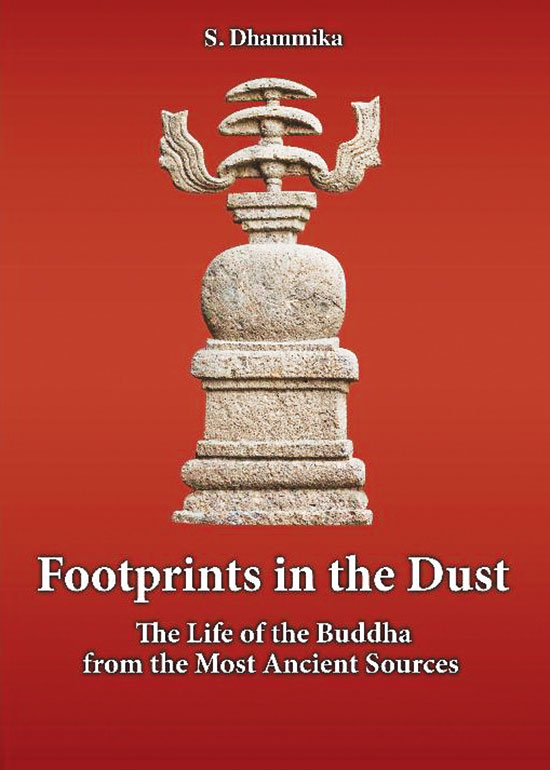
Footprints in the Dust: The Life of the Buddha from the Most Ancient Sources’
By Dr Upul Wijayawardhana
Bhante Shravasti Dhammika of Australia, a prolific writer, who has authored many books, keeps us informed of various aspects of Buddhism by his regular contributions to The Island and Sunday Island. Thanks to an introduction by my good friend Tissa Devendra, I have been in regular touch with Bhante Dhammika and turn to him whenever I have a question on Buddhism. When he sent me a soft copy of his latest book, “Footprints in the Dust”, which carries the subtitle, “The Life of the Buddha from the Most Ancient Sources”, I asked myself, ‘Is there a need for yet another Life of the Buddha’? After all, there’s plenty to choose from!
My doubts regarding the need for another biography of the Buddha started to melt away, as soon as I started reading this absorbing book with very realistic analysis of events. In fact, the book deals with much more than the title suggests and is an analysis of the life and the times of the Buddha. Most books on Buddha’s life are written with a reverential than an analytical attitude and do not put the prevailing conditions in India in context. These are the two major differences and the great strength of this monograph. Though some traditional Buddhists may not agree with Bhante Dhammika’s interpretations, as he is not shy in pointing out exaggerations, I have no disagreements whatsoever and have come to know the Buddha better; as an extraordinary human being, far ahead of his time who led a very simple life, walking barefoot across India, disseminating His message.The book, laden with facts, references and explanations, appearing at the foot of each page, and chapters being devised very innovatively. After the first chapter titled ‘Introduction’ there are chapters on ‘An Era of Change’, ‘Gods, Brahmins and Ascetics’, ‘The Sakyans’, ‘Towards the light’, ‘A Teacher of Gods and Humans’, ‘A Day in Buddha’s Life’, ‘On the Road’, ‘Praise and Blame’, ‘Monastic and Lay Disciples’, ‘The Buddha on Worldly Matters’, ‘A Time of Crisis’, ‘The Last Days’ and ‘Aftermath’.
To get a feel for the world in which the Buddha lived and travelled, Bhante Dhammika had undertaken three walking tours in India, following the footsteps of the Buddha; from Bodh Gaya to Varanasi, from Bodh Gaya to Rajgir with return and from Rajgir to Kusinara, the longest, retracing the Buddha’s last journey. On page 136, there is a map with all the places referred to and Appendix I describes in detail the Towns and Cities Visited by the Buddha. Appendix II is an analytical essay on the Buddha and the Upanisads, which clearly dispels the widespread misunderstanding that the Buddha copied Kamma and rebirth from the Upanisads. The introduction itself is very informative and on page 2, Bhante Dhammika mentions: “By about the tenth century a confused and fragmentary account of the Buddha’s life had filtered into Europe and because it depicted him and as conspicuously holy it was assumed that he must therefore have been a Christian. Consequently, he was inducted into the Catholic Church as a saint under the name St. Josaphat, his feast day being the 27th of November.”
Till I read this, I was not aware of the recognition of Buddha as a saint by the Catholic Church. Though I presumed it was a little-known fact, apparently, it is a fairly well-known particularly by critics of the Catholic Church. The name St. Josaphat is likely to be a corruption of the term Bodhisattva or Bodhisat.Another interesting paragraph is: “Inspired by the new thinking of the Second Vatican Council, eminent theologian Karl Rahner informed Buddhists in the late 1950s that they were what he actually called “anonymous Christians” and presumably, that the Buddha was also a Christian without knowing it. As of today, no Buddhist thinker had returned the compliment by announcing that Christians are anonymous Buddhists and that Jesus was really a late comer to the Dhamma, despite not wearing a yellow robe.”
Perhaps, no one has cared to do so, as spatial distribution of events is fact enough!
As mentioned in the chapter ‘The Last Days’, in addition to the conflict at Kosambi as well as the rebellion by Devadatta demanding that monks should reside in the forest, get food only by going for alms, robes should only be from rags, live under trees not in huts and should not eat meat, the Buddha was aware of the deterioration in standards of the Sangha: maybe, due to their ‘basking in the glory of the Buddha’. Opulent lifestyles of some monks are in sharp contrast to how the Buddha lived. I will quote some paragraphs to illustrate:
“During a visit to Suṃsumarāgira, Prince Bodhi invited him to his Palace for a meal. In preparation for his arrival, the Prince had a white cloth spread over the stairs leading to the Palace entrance, a mark of considerable esteem, equivalent to today’s red-carpet treatment. When the Buddha arrived and saw the white cloth, he halted just short of it. Perplexed, the Prince asked what the problem was but the Buddha said nothing. When the Prince inquired for a third time and still received no response, Ananda explained to him that the Buddha would not walk on the cloth because he was “concerned about future generations”. By this he meant that the Buddha wanted to set an example for monks and nuns in the future who might become too fond of the esteem shown to them by devote lay people and fall prey to pride. Prince Bodhi had the white cloth taken up and the Buddha entered the Palace.”
What a difference between the Buddha and the modern-day Sangha!
“There were four offences for which a monk would be expelled from the Sangha and never be readmitted – sexual intercourse; theft; murder or abetment to murder; and falsely claiming to have attained an exalted spiritual state.”
The number of Bhikkhus in Sri Lanka who claim to have attained an exalted spiritual state is increasing by the day and they have websites referring to themselves as “Arahant”. However, their behaviour, extravagance in dress, etc., makes one greatly doubt these claims.
“What the Buddha precluded monks from doing, included palmistry, predicting good or bad rainfall or success or failure in war, selecting lucky sites for buildings, reading the future by means of the movement of the heavenly bodies or the occurrences of comets and eclipses, practicing black magic and quack medicine, casting spells and calling on various gods for help.”
Some Bhikkhus in Sri Lanka make a living out of all these!
“The Buddha even discouraged what might be considered harmless superstitions and folk beliefs. Once while giving a sermon, he sneezed and a loud chorus of ‘Live long!’ emanated from the audience. Ever the rationalist, he momentarily deviated from the gist of his sermon and asked whether a person’s lifespan is lengthened by saying ‘Live long!’ when they sneeze. The audience admitted that it is not and so he asked them to refrain from doing such a thing in the future.”
I was under the impression that ‘Bless you’ with sneezing was a western custom but this clearly shows it dates to the time of the Buddha. Fascinating how universal some of these customs are!
“The Buddha’s attitude to caste (vaṇṇa) was another area which put him at odds with many in his society, although other samaṇa sects, particularly Jainism, rejected caste too. The caste system as it existed in the fifth and sixth century was not as rigid or all-embracing as it later become but it still created barriers between people and relegated some to a lowly social position for no other reason than the accident of birth or the work they were compelled to do.”
Some of our Nikaya’s are caste-based, completely disregarding Buddha’s attitude!
“In India today marginalized castes are inspired by the Buddha’s attitude to the system to agitate for equality.”
Unfortunately, caste plays a major role in India even today in spite of legislation. Recently I read about the poet and lyricist Shailendra who wrote the lyrics of some of the most memorable songs in Hindi Cinema, especially Raj Kapoor films. Apparently, he did not get the recognition he deserved because he was a Dalit!
Bhante Dhammika questions some of the perceptions we have of the Buddha. One of the most disturbing events in Buddha’s life happened in Vesali. After conducting ‘Ashuba Bhavana’, which concentrates on ‘filthiness’ of bodily secretions, the Buddha retreated for a few weeks and learned on return that 30 young monks had committed suicide, after being disturbed by this meditation. Thus, the Buddha did not always foresee what was going to happen. We are told the Buddha had 32 distinguishing marks but, perplexingly, King Ajasattu could not identify the Buddha from among the monks on his first visit. Anyway, Buddha rejected the notion that physical attributes make one special, stating that what makes a person great is a liberated mind.The Buddha was ahead of His time on many issues, including caste, and stood against slavery by not allowing monks to accept slaves. Slavery was a common practice in India during Buddha’s time. When King Pasenadi of Kosala was breathless in front of the Buddha due to obesity, He advised on mindful eating to reduce weight which the king did successfully. This method is now used by dietitians. Buddha’s attitude towards marriage was also far ahead of time as illustrated by the following quote:
“Another type of happiness the Buddha frequently gave attention to was that associated with family life, the basis of which is marriage. Amongst higher castes at the time arranging with a girl’s parents to marry her off without consulting her and even buying a wife was not unusual. The Buddha criticized brahmans for doing this rather than “coming together in harmony and out of mutual affection”. (Sampiyena pi saṃvāsaṃ samaggatthāya sampavattenti), which he obviously considered to be a far better motive for marriage.”
For me, the most notable fact that comes out of this book is that the Buddha considered the role of the Upasaka and Upasikas in propagating and preserving His Dharma as important as that of the Sangha. This is very significant as the Buddha’s primary reason for establishing the Sangha was for propagating His message; not for sacerdotal duties like Brahmins or Christian priests or community leader role like in Judaism.Servant woman Khujjuttara remembered and transmitted Buddha’s sermons in Kosambi. Buddha recognised Citta and Hatthaka as lay teachers and considered Citta the most erudite lay Dhamma teacher. How Citta outclassed the Jain leader, Mahavira is described in detail in page 177 and is well worth a read.Unfortunately, with the passage of time, the Sangha reduced the status of Upasaka and Upasika’s to those who look after their needs!
Sat Mag
October 13 at the Women’s T20 World Cup: Injury concerns for Australia ahead of blockbuster game vs India
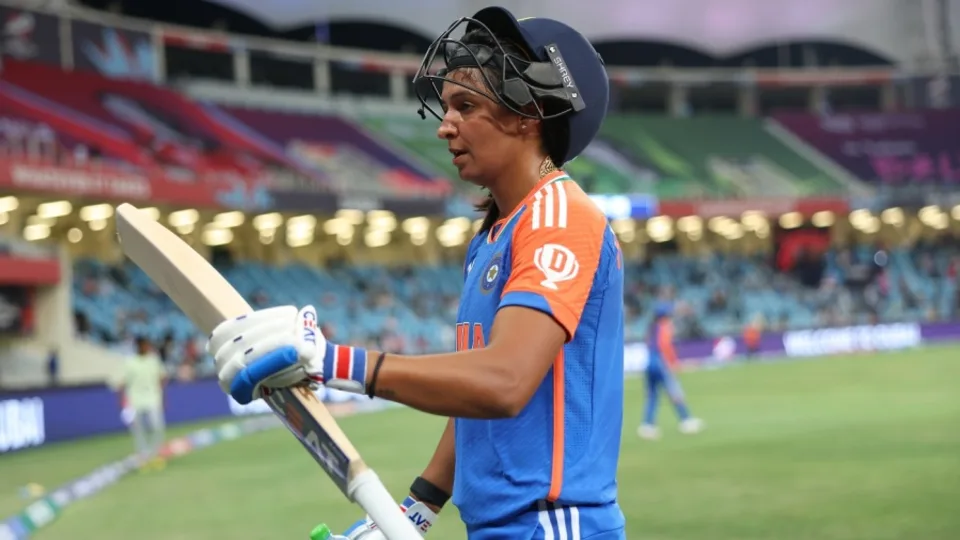
Australia vs India
Sharjah, 6pm local time
Australia have major injury concerns heading into the crucial clash. Just four balls into the match against Pakistan, Tayla Vlaeminck was out with a right shoulder dislocation. To make things worse, captain Alyssa Healy suffered an acute right foot injury while batting on 37 as she hobbled off the field with Australia needing 14 runs to win. Both players went for scans on Saturday.
India captain Harmanpreet Kaur who had hurt her neck in the match against Pakistan, turned up with a pain-relief patch on the right side of her neck during the Sri Lanka match. She also didn’t take the field during the chase. Fast bowler Pooja Vastrakar bowled full-tilt before the Sri Lanka game but didn’t play.
India will want a big win against Australia. If they win by more than 61 runs, they will move ahead of Australia, thereby automatically qualifying for the semi-final. In a case where India win by fewer than 60 runs, they will hope New Zealand win by a very small margin against Pakistan on Monday. For instance, if India make 150 against Australia and win by exactly 10 runs, New Zealand need to beat Pakistan by 28 runs defending 150 to go ahead of India’s NRR. If India lose to Australia by more than 17 runs while chasing a target of 151, then New Zealand’s NRR will be ahead of India, even if Pakistan beat New Zealand by just 1 run while defending 150.
Overall, India have won just eight out of 34 T20Is they’ve played against Australia. Two of those wins came in the group-stage games of previous T20 World Cups, in 2018 and 2020.
Australia squad:
Alyssa Healy (capt & wk), Darcie Brown, Ashleigh Gardner, Kim Garth, Grace Harris, Alana King, Phoebe Litchfield, Tahlia McGrath, Sophie Molineux, Beth Mooney, Ellyse Perry, Megan Schutt, Annabel Sutherland, Tayla Vlaeminck, Georgia Wareham
India squad:
Harmanpreet Kaur (capt), Smriti Mandhana (vice-capt), Yastika Bhatia (wk), Shafali Verma, Deepti Sharma, Jemimah Rodrigues, Richa Ghosh (wk), Pooja Vastrakar, Arundhati Reddy, Renuka Singh, D Hemalatha, Asha Sobhana, Radha Yadav, Shreyanka Patil, S Sajana
Tournament form guide:
Australia have three wins in three matches and are coming into this contest having comprehensively beaten Pakistan. With that win, they also all but sealed a semi-final spot thanks to their net run rate of 2.786. India have two wins in three games. In their previous match, they posted the highest total of the tournament so far – 172 for 3 and in return bundled Sri Lanka out for 90 to post their biggest win by runs at the T20 World Cup.
Players to watch:
Two of their best batters finding their form bodes well for India heading into the big game. Harmanpreet and Mandhana’s collaborative effort against Pakistan boosted India’s NRR with the semi-final race heating up. Mandhana, after a cautious start to her innings, changed gears and took on Sri Lanka’s spinners to make 50 off 38 balls. Harmanpreet, continuing from where she’d left against Pakistan, played a classic, hitting eight fours and a six on her way to a 27-ball 52. It was just what India needed to reinvigorate their T20 World Cup campaign.
[Cricinfo]
Sat Mag
Living building challenge

By Eng. Thushara Dissanayake
The primitive man lived in caves to get shelter from the weather. With the progression of human civilization, people wanted more sophisticated buildings to fulfill many other needs and were able to accomplish them with the help of advanced technologies. Security, privacy, storage, and living with comfort are the common requirements people expect today from residential buildings. In addition, different types of buildings are designed and constructed as public, commercial, industrial, and even cultural or religious with many advanced features and facilities to suit different requirements.
We are facing many environmental challenges today. The most severe of those is global warming which results in many negative impacts, like floods, droughts, strong winds, heatwaves, and sea level rise due to the melting of glaciers. We are experiencing many of those in addition to some local issues like environmental pollution. According to estimates buildings account for nearly 40% of all greenhouse gas emissions. In light of these issues, we have two options; we change or wait till the change comes to us. Waiting till the change come to us means that we do not care about our environment and as a result we would have to face disastrous consequences. Then how can we change in terms of building construction?
Before the green concept and green building practices come into play majority of buildings in Sri Lanka were designed and constructed just focusing on their intended functional requirements. Hence, it was much likely that the whole process of design, construction, and operation could have gone against nature unless done following specific regulations that would minimize negative environmental effects.
We can no longer proceed with the way we design our buildings which consumes a huge amount of material and non-renewable energy. We are very concerned about the food we eat and the things we consume. But we are not worrying about what is a building made of. If buildings are to become a part of our environment we have to design, build and operate them based on the same principles that govern the natural world. Eventually, it is not about the existence of the buildings, it is about us. In other words, our buildings should be a part of our natural environment.
The living building challenge is a remarkable design philosophy developed by American architect Jason F. McLennan the founder of the International Living Future Institute (ILFI). The International Living Future Institute is an environmental NGO committed to catalyzing the transformation toward communities that are socially just, culturally rich, and ecologically restorative. Accordingly, a living building must meet seven strict requirements, rather certifications, which are called the seven “petals” of the living building. They are Place, Water, Energy, Equity, Materials, Beauty, and Health & Happiness. Presently there are about 390 projects around the world that are being implemented according to Living Building certification guidelines. Let us see what these seven petals are.
Place
This is mainly about using the location wisely. Ample space is allocated to grow food. The location is easily accessible for pedestrians and those who use bicycles. The building maintains a healthy relationship with nature. The objective is to move away from commercial developments to eco-friendly developments where people can interact with nature.
Water
It is recommended to use potable water wisely, and manage stormwater and drainage. Hence, all the water needs are captured from precipitation or within the same system, where grey and black waters are purified on-site and reused.
Energy
Living buildings are energy efficient and produce renewable energy. They operate in a pollution-free manner without carbon emissions. They rely only on solar energy or any other renewable energy and hence there will be no energy bills.
Equity
What if a building can adhere to social values like equity and inclusiveness benefiting a wider community? Yes indeed, living buildings serve that end as well. The property blocks neither fresh air nor sunlight to other adjacent properties. In addition, the building does not block any natural water path and emits nothing harmful to its neighbors. On the human scale, the equity petal recognizes that developments should foster an equitable community regardless of an individual’s background, age, class, race, gender, or sexual orientation.
Materials
Materials are used without harming their sustainability. They are non-toxic and waste is minimized during the construction process. The hazardous materials traditionally used in building components like asbestos, PVC, cadmium, lead, mercury, and many others are avoided. In general, the living buildings will not consist of materials that could negatively impact human or ecological health.
Beauty
Our physical environments are not that friendly to us and sometimes seem to be inhumane. In contrast, a living building is biophilic (inspired by nature) with aesthetical designs that beautify the surrounding neighborhood. The beauty of nature is used to motivate people to protect and care for our environment by connecting people and nature.
Health & Happiness
The building has a good indoor and outdoor connection. It promotes the occupants’ physical and psychological health while causing no harm to the health issues of its neighbors. It consists of inviting stairways and is equipped with operable windows that provide ample natural daylight and ventilation. Indoor air quality is maintained at a satisfactory level and kitchen, bathrooms, and janitorial areas are provided with exhaust systems. Further, mechanisms placed in entrances prevent any materials carried inside from shoes.
The Bullitt Center building
Bullitt Center located in the middle of Seattle in the USA, is renowned as the world’s greenest commercial building and the first office building to earn Living Building certification. It is a six-story building with an area of 50,000 square feet. The area existed as a forest before the city was built. Hence, the Bullitt Center building has been designed to mimic the functions of a forest.
The energy needs of the building are purely powered by the solar system on the rooftop. Even though Seattle is relatively a cloudy city the Bullitt Center has been able to produce more energy than it needed becoming one of the “net positive” solar energy buildings in the world. The important point is that if a building is energy efficient only the area of the roof is sufficient to generate solar power to meet its energy requirement.
It is equipped with an automated window system that is able to control the inside temperature according to external weather conditions. In addition, a geothermal heat exchange system is available as the source of heating and cooling for the building. Heat pumps convey heat stored in the ground to warm the building in the winter. Similarly, heat from the building is conveyed into the ground during the summer.
The potable water needs of the building are achieved by treating rainwater. The grey water produced from the building is treated and re-used to feed rooftop gardens on the third floor. The black water doesn’t need a sewer connection as it is treated to a desirable level and sent to a nearby wetland while human biosolid is diverted to a composting system. Further, nearly two third of the rainwater collected from the roof is fed into the groundwater and the process resembles the hydrologic function of a forest.
It is encouraging to see that most of our large-scale buildings are designed and constructed incorporating green building concepts, which are mainly based on environmental sustainability. The living building challenge can be considered an extension of the green building concept. Amanda Sturgeon, the former CEO of the ILFI, has this to say in this regard. “Before we start a project trying to cram in every sustainable solution, why not take a step outside and just ask the question; what would nature do”?
Sat Mag
Something of a revolution: The LSSP’s “Great Betrayal” in retrospect
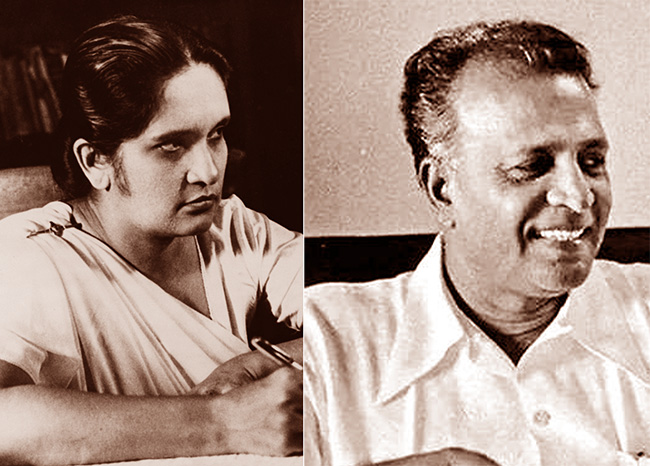
By Uditha Devapriya
On June 7, 1964, the Central Committee of the Lanka Sama Samaja Party convened a special conference at which three resolutions were presented. The first, moved by N. M. Perera, called for a coalition with the SLFP, inclusive of any ministerial portfolios. The second, led by the likes of Colvin R. de Silva, Leslie Goonewardena, and Bernard Soysa, advocated a line of critical support for the SLFP, but without entering into a coalition. The third, supported by the likes of Edmund Samarakkody and Bala Tampoe, rejected any form of compromise with the SLFP and argued that the LSSP should remain an independent party.
The conference was held a year after three parties – the LSSP, the Communist Party, and Philip Gunawardena’s Mahajana Eksath Peramuna – had founded a United Left Front. The ULF’s formation came in the wake of a spate of strikes against the Sirimavo Bandaranaike government. The previous year, the Ceylon Transport Board had waged a 17-day strike, and the harbour unions a 60-day strike. In 1963 a group of working-class organisations, calling itself the Joint Committee of Trade Unions, began mobilising itself. It soon came up with a common programme, and presented a list of 21 radical demands.
In response to these demands, Bandaranaike eventually supported a coalition arrangement with the left. In this she was opposed, not merely by the right-wing of her party, led by C. P. de Silva, but also those in left parties opposed to such an agreement, including Bala Tampoe and Edmund Samarakkody. Until then these parties had never seen the SLFP as a force to reckon with: Leslie Goonewardena, for instance, had characterised it as “a Centre Party with a programme of moderate reforms”, while Colvin R. de Silva had described it as “capitalist”, no different to the UNP and by default as bourgeois as the latter.
The LSSP’s decision to partner with the government had a great deal to do with its changing opinions about the SLFP. This, in turn, was influenced by developments abroad. In 1944, the Fourth International, which the LSSP had affiliated itself with in 1940 following its split with the Stalinist faction, appointed Michel Pablo as its International Secretary. After the end of the war, Pablo oversaw a shift in the Fourth International’s attitude to the Soviet states in Eastern Europe. More controversially, he began advocating a strategy of cooperation with mass organisations, regardless of their working-class or radical credentials.
Pablo argued that from an objective perspective, tensions between the US and the Soviet Union would lead to a “global civil war”, in which the Soviet Union would serve as a midwife for world socialist revolution. In such a situation the Fourth International would have to take sides. Here he advocated a strategy of entryism vis-à-vis Stalinist parties: since the conflict was between Stalinist and capitalist regimes, he reasoned, it made sense to see the former as allies. Such a strategy would, in his opinion, lead to “integration” into a mass movement, enabling the latter to rise to the level of a revolutionary movement.

Though controversial, Pablo’s line is best seen in the context of his times. The resurgence of capitalism after the war, and the boom in commodity prices, had a profound impact on the course of socialist politics in the Third World. The stunted nature of the bourgeoisie in these societies had forced left parties to look for alternatives. For a while, Trotsky had been their guide: in colonial and semi-colonial societies, he had noted, only the working class could be expected to see through a revolution. This entailed the establishment of workers’ states, but only those arising from a proletarian revolution: a proposition which, logically, excluded any compromise with non-radical “alternatives” to the bourgeoisie.
To be sure, the Pabloites did not waver in their support for workers’ states. However, they questioned whether such states could arise only from a proletarian revolution. For obvious reasons, their reasoning had great relevance for Trotskyite parties in the Third World. The LSSP’s response to them showed this well: while rejecting any alliance with Stalinist parties, the LSSP sympathised with the Pabloites’ advocacy of entryism, which involved a strategic orientation towards “reformist politics.” For the world’s oldest Trotskyite party, then going through a series of convulsions, ruptures, and splits, the prospect of entering the reformist path without abandoning its radical roots proved to be welcoming.
Writing in the left-wing journal Community in 1962, Hector Abhayavardhana noted some of the key concerns that the party had tried to resolve upon its formation. Abhayavardhana traced the LSSP’s origins to three developments: international communism, the freedom struggle in India, and local imperatives. The latter had dictated the LSSP’s manifesto in 1936, which included such demands as free school books and the use of Sinhala and Tamil in the law courts. Abhayavardhana suggested, correctly, that once these imperatives changed, so would the party’s focus, though within a revolutionary framework. These changes would be contingent on two important factors: the establishment of universal franchise in 1931, and the transfer of power to the local bourgeoisie in 1948.
Paradoxical as it may seem, the LSSP had entered the arena of radical politics through the ballot box. While leading the struggle outside parliament, it waged a struggle inside it also. This dual strategy collapsed when the colonial government proscribed the party and the D. S. Senanayake government disenfranchised plantation Tamils. Suffering two defeats in a row, the LSSP was forced to think of alternatives. That meant rethinking categories such as class, and grounding them in the concrete realities of the country.
This was more or less informed by the irrelevance of classical and orthodox Marxian analysis to the situation in Sri Lanka, specifically to its rural society: with a “vast amorphous mass of village inhabitants”, Abhayavardhana observed, there was no real basis in the country for a struggle “between rich owners and the rural poor.” To complicate matters further, reforms like the franchise and free education, which had aimed at the emancipation of the poor, had in fact driven them away from “revolutionary inclinations.” The result was the flowering of a powerful rural middle-class, which the LSSP, to its discomfort, found it could not mobilise as much as it had the urban workers and plantation Tamils.
Where else could the left turn to? The obvious answer was the rural peasantry. But the rural peasantry was in itself incapable of revolution, as Hector Abhayavardhana has noted only too clearly. While opposing the UNP’s Westernised veneer, it did not necessarily oppose the UNP’s overtures to Sinhalese nationalism. As historians like K. M. de Silva have observed, the leaders of the UNP did not see their Westernised ethos as an impediment to obtaining support from the rural masses. That, in part at least, was what motivated the Senanayake government to deprive Indian estate workers of their most fundamental rights, despite the existence of pro-minority legal safeguards in the Soulbury Constitution.
To say this is not to overlook the unique character of the Sri Lankan rural peasantry and petty bourgeoisie. Orthodox Marxists, not unjustifiably, characterise the latter as socially and politically conservative, tilting more often than not to the right. In Sri Lanka, this has frequently been the case: they voted for the UNP in 1948 and 1952, and voted en masse against the SLFP in 1977. Yet during these years they also tilted to the left, if not the centre-left: it was the petty bourgeoisie, after all, which rallied around the SLFP, and supported its more important reforms, such as the nationalisation of transport services.
One must, of course, be wary of pasting the radical tag on these measures and the classes that ostensibly stood for them. But if the Trotskyite critique of the bourgeoisie – that they were incapable of reform, even less revolution – holds valid, which it does, then the left in the former colonies of the Third World had no alternative but to look elsewhere and to be, as Abhayavardhana noted, “practical men” with regard to electoral politics. The limits within which they had to work in Sri Lanka meant that, in the face of changing dynamics, especially among the country’s middle-classes, they had to change their tactics too.
Meanwhile, in 1953, the Trotskyite critique of Pabloism culminated with the publication of an Open Letter by James Cannon, of the US Socialist Workers’ Party. Cannon criticised the Pabloite line, arguing that it advocated a policy of “complete submission.” The publication of the letter led to the withdrawal of the International Committee of the Fourth International from the International Secretariat. The latter, led by Pablo, continued to influence socialist parties in the Third World, advocating temporary alliances with petty bourgeois and centrist formations in the guise of opposing capitalist governments.
For the LSSP, this was a much-needed opening. Even as late as 1954, three years after S. W. R. D. Bandaranaike formed the SLFP, the LSSP continued to characterise the latter as the alternative bourgeois party in Ceylon. Yet this did not deter it from striking up no contest pacts with Bandaranaike at the 1956 election, a strategy that went back to November 1951, when the party requested the SLFP to hold a discussion about the possibility of eliminating contests in the following year’s elections. Though it extended critical support to the MEP government in 1956, the LSSP opposed the latter once it enacted emergency measures in 1957, mobilising trade union action for a period of three years.
At the 1960 election the LSSP contested separately, with the slogan “N. M. for P.M.” Though Sinhala nationalism no longer held sway as it had in 1956, the LSSP found itself reduced to a paltry 10 seats. It was against this backdrop that it began rethinking its strategy vis-à-vis the ruling party. At the throne speech in April 1960, Perera openly declared that his party would not stabilise the SLFP. But a month later, in May, he called a special conference, where he moved a resolution for a coalition with the party. As T. Perera has noted in his biography of Edmund Samarakkody, the response to the resolution unearthed two tendencies within the oppositionist camp: the “hardliners” who opposed any compromise with the SLFP, including Samarakkody, and the “waverers”, including Leslie Goonewardena.
These tendencies expressed themselves more clearly at the 1964 conference. While the first resolution by Perera called for a complete coalition, inclusive of Ministries, and the second rejected a coalition while extending critical support, the third rejected both tactics. The outcome of the conference showed which way these tendencies had blown since they first manifested four years earlier: Perera’s resolution obtained more than 500 votes, the second 75 votes, the third 25. What the anti-coalitionists saw as the “Great Betrayal” of the LSSP began here: in a volte-face from its earlier position, the LSSP now held the SLFP as a party of a radical petty bourgeoisie, capable of reform.
History has not been kind to the LSSP’s decision. From 1970 to 1977, a period of less than a decade, these strategies enabled it, as well as the Communist Party, to obtain a number of Ministries, as partners of a petty bourgeois establishment. This arrangement collapsed the moment the SLFP turned to the right and expelled the left from its ranks in 1975, in a move which culminated with the SLFP’s own dissolution two years later.
As the likes of Samarakkody and Meryl Fernando have noted, the SLFP needed the LSSP and Communist Party, rather than the other way around. In the face of mass protests and strikes in 1962, the SLFP had been on the verge of complete collapse. The anti-coalitionists in the LSSP, having established themselves as the LSSP-R, contended later on that the LSSP could have made use of this opportunity to topple the government.
Whether or not the LSSP could have done this, one can’t really tell. However, regardless of what the LSSP chose to do, it must be pointed out that these decades saw the formation of several regimes in the Third World which posed as alternatives to Stalinism and capitalism. Moreover, the LSSP’s decision enabled it to see through certain important reforms. These included Workers’ Councils. Critics of these measures can point out, as they have, that they could have been implemented by any other regime. But they weren’t. And therein lies the rub: for all its failings, and for a brief period at least, the LSSP-CP-SLFP coalition which won elections in 1970 saw through something of a revolution in the country.
The writer is an international relations analyst, researcher, and columnist based in Sri Lanka who can be reached at udakdev1@gmail.com
-

 News5 days ago
News5 days agoSuspect injured in police shooting hospitalised
-

 Features6 days ago
Features6 days agoRobbers and Wreckers
-

 Business6 days ago
Business6 days agoBhathiya Bulumulla – The Man I Knew
-

 Business5 days ago
Business5 days agoSanjiv Hulugalle appointed CEO and General Manager of Cinnamon Life at City of Dreams Sri Lanka
-
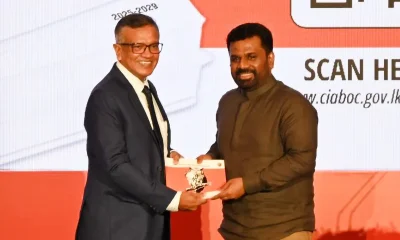
 Business7 days ago
Business7 days agoNational Anti-Corruption Action Plan launched with focus on economic recovery
-
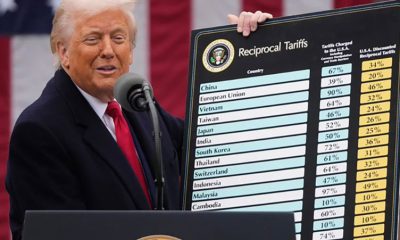
 Features4 days ago
Features4 days agoLiberation Day tariffs chaos could cause permanent damage to US economy, amid global tensions
-
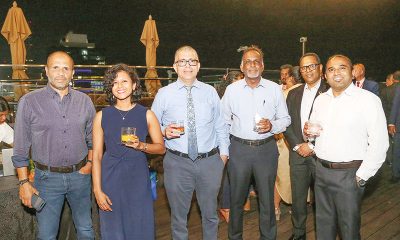
 Business4 days ago
Business4 days agoMembers’ Night of the Sri Lanka – Russia Business Council of The Ceylon Chamber of Commerce
-
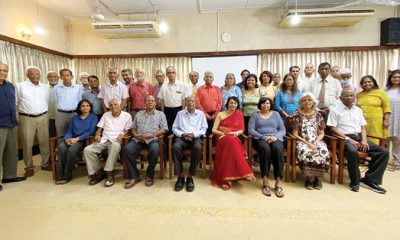
 Features4 days ago
Features4 days agoMinds and Memories picturing 65 years of Sri Lankan Politics and Society











